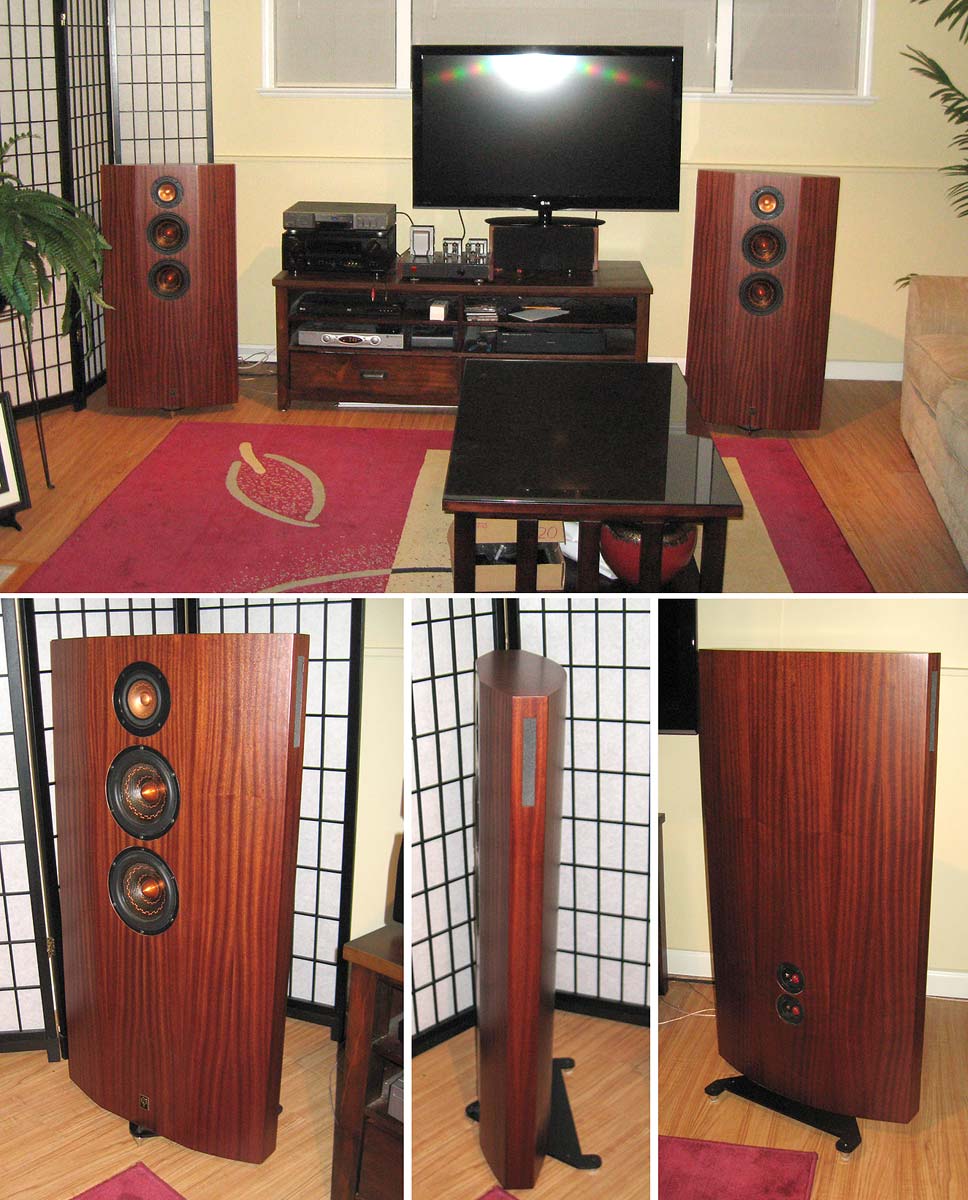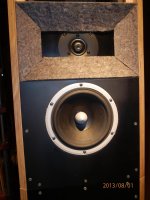I have a question of what is more important, time alignment of drivers or minimizing baffle size when designing a speaker.
Assuming I could not satisfy both is one more important than the other? Thanks.
Assuming I could not satisfy both is one more important than the other? Thanks.
That's kind of a loaded question, and an odd kind of either or. 🙂
Minimizing baffle size is not usually something I think about at all. Are you trying to reduce diffraction?
And just to double check, are you trying to actually time or phase align your drivers?
Best,
Erik
Minimizing baffle size is not usually something I think about at all. Are you trying to reduce diffraction?
And just to double check, are you trying to actually time or phase align your drivers?
Best,
Erik
Well. In discussions with Danny Ritche I mentioned that my baffle width for my tweeter is 12 inch wide and he advised that I should use a narrower baffle for best imaging. I have heard this recommendation before. Now if I were to try to accomplish both in my system I might have some serious diffraction issues to deal with. I am time aligned now (going for best impulse response) but the way it is currently constructed it is a smooth transition so I don't get much diffraction effect. Maybe Im over thinking but since I have a choice of either or Id like to know if it matters.thanks.
Most of what goes for "time alignment" in audio talk (putting all the voice coils in a vertical line) isn't really. The crossover causes time delay, and nearly always significant phase distortion too. Waveforms such as square waves will be unrecognizeable through most speakers if you look at them on a 'scope no matter how their voice coils are arranged. Lining up the voice coils will in no way make a speaker "waveform accurate".
Time alignment over baffle size. You can always incorporate the many benefits of a waveguide if the baffle is wider than you'd like
I'm with Bill, who is much better at this than I am. 🙂 I mean, technically the two items are not that related. Look at Vandersteen for instance. Time aligned and minimum baffle. Then Thiel is time aligned and moderate baffle.
Neither really sing to me anyway.
Some of the best speakers I've heard had ridiculously wide baffles. The Sonus Faber Stradivari. Most DIY'ers either offset the tweeter, or midrange if possible as well as round or chamfer the edges. In addition, some rare and brilliant individuals may add significant wool or felt around the tweeters to further improve this.
Neither really sing to me anyway.
Some of the best speakers I've heard had ridiculously wide baffles. The Sonus Faber Stradivari. Most DIY'ers either offset the tweeter, or midrange if possible as well as round or chamfer the edges. In addition, some rare and brilliant individuals may add significant wool or felt around the tweeters to further improve this.
For best imaging you want no diffraction (extra sources) to be added. That is achieved by flush mounting (very wide baffle). If you want time alignment on a flat baffle then you need to delay the signal to the tweeter. This is straightforward with a DSP active crossover. Job done.I have a question of what is more important, time alignment of drivers or minimizing baffle size when designing a speaker.
"Time alignment" is such a misused term. As Bill says, aligning the acoustic sources is mostly useless until you consider the effect of the crossover. Remember, the phase through the crossover region is all that matters.
Or if you really want linear phase (which is a major bit*h to do with a passive crossover, and brings along all kinds of other significant compromises), design the speaker for it's dB response shape and ignore time - and then use an FIR equalizer to correct the phase and make it waveform accurate. I'm still not sure how audibly significant it is, but if getting an impulse response that is actually a pulse is important, that's the way to go.
Some of the best speakers I've heard had ridiculously wide baffles.
These image really well.

I don’t usually use typical tweeters, the XO is 1st order (PLLXO) and the drivers are well within a ¼ wavelength at the 160 Hz XO so time response is very good. The EnABLing of the drivers also improves the ability to resolve small details that are required for a really good image/soundspace
dave
For best imaging you want no diffraction (extra sources) to be added. That is achieved by flush mounting (very wide baffle). If you want time alignment on a flat baffle then you need to delay the signal to the tweeter. This is straightforward with a DSP active crossover. Job done.
Don't forget tilting the baffle. 🙂
However, you still end up in difficult crossovers. Usually manufacturers end up with a 1st order high pass filter, possibly exposing the tweeter to early failures. I think at least 1 Thiel model was known for this, but after 10 years.... maybe that's OK.
Did your discussions cover spaciousness, or imaging proper? I'd tend to think you were on a reasonable track.
Tweeters aren't normally narrow enough not to be half space loaded above some frequency, there will be a transition somewhere that needs care. As I see it you can have your distributed diffractions covered a short distance from the driver but I'd rather ease them using the available space.
I can believe planet10 that the above speakers image well, that baffle looks as if it does a few things right.
Tweeters aren't normally narrow enough not to be half space loaded above some frequency, there will be a transition somewhere that needs care. As I see it you can have your distributed diffractions covered a short distance from the driver but I'd rather ease them using the available space.
I can believe planet10 that the above speakers image well, that baffle looks as if it does a few things right.
the cabinet is tilted back and provides some delay and I have the tweeter set back physically from the mid and woofer. I went through a process with someone on the forums here that has more experience than I. I will post pics later.
Allen, The discussion was basically that "for best imaging you want to keep you baffle width narrow" and something about the baffle is a launch for the sound wave of some sorts. I will try to post pics later of what I am working with. Thanks Much.
Allen, The discussion was basically that "for best imaging you want to keep you baffle width narrow" and something about the baffle is a launch for the sound wave of some sorts. I will try to post pics later of what I am working with. Thanks Much.
A narrow baffle will 'waveguide' a wider band of frequencies toward reflecting off the wall behind. This adds spaciousness, which is the incorporation of the room walls such as those nearby. This is not imaging, which can happen without the room. It may affect imaging, for better or worse depending on how it's done.the baffle is a launch for the sound wave
The choice is which reflections if any do you want and at what frequencies, and what diffraction is required and when and how will you allow it.
Ha ha thanks Allen, it's never simple and straightforward. Everything make a difference, but there are lots of considerations.
Troels has a wide baffle design, and I have to concur with his assesment. Wide baffle speakers have great imaging and bring their own room, that is, you feel transported into the acoustic space of the recording.
Whether that's too dry for some I'm not sure, but someday I hope to have a listening room big enough to accommodate a pair. 🙂
Best,
Erik
Whether that's too dry for some I'm not sure, but someday I hope to have a listening room big enough to accommodate a pair. 🙂
Best,
Erik
So, I believe the explanation of why wide baffles are more clear is that by the time the waves reach the edges more energy has been radiated as part of the original wavefront, so by the time they reach the edges and re-radiate due to diffraction, there's much less energy left.
Of course, this also means the dispersion is relatively narrow. There's less rearward reflections making them more wall friendly, while at the same time reducing "spaciousness" or the added acoustics of the listening room. That's why you'll see rear facing tweets sometimes.
Of course, this also means the dispersion is relatively narrow. There's less rearward reflections making them more wall friendly, while at the same time reducing "spaciousness" or the added acoustics of the listening room. That's why you'll see rear facing tweets sometimes.
Last edited:
Photo added
OK so this is an old photo as I have been playing with different drivers but physically it is the same. Felt was added and the recess was tapered to allow smooth transition.
OK so this is an old photo as I have been playing with different drivers but physically it is the same. Felt was added and the recess was tapered to allow smooth transition.
Attachments
Last edited:
- Status
- Not open for further replies.
- Home
- Loudspeakers
- Multi-Way
- Design consideration, order of importance

